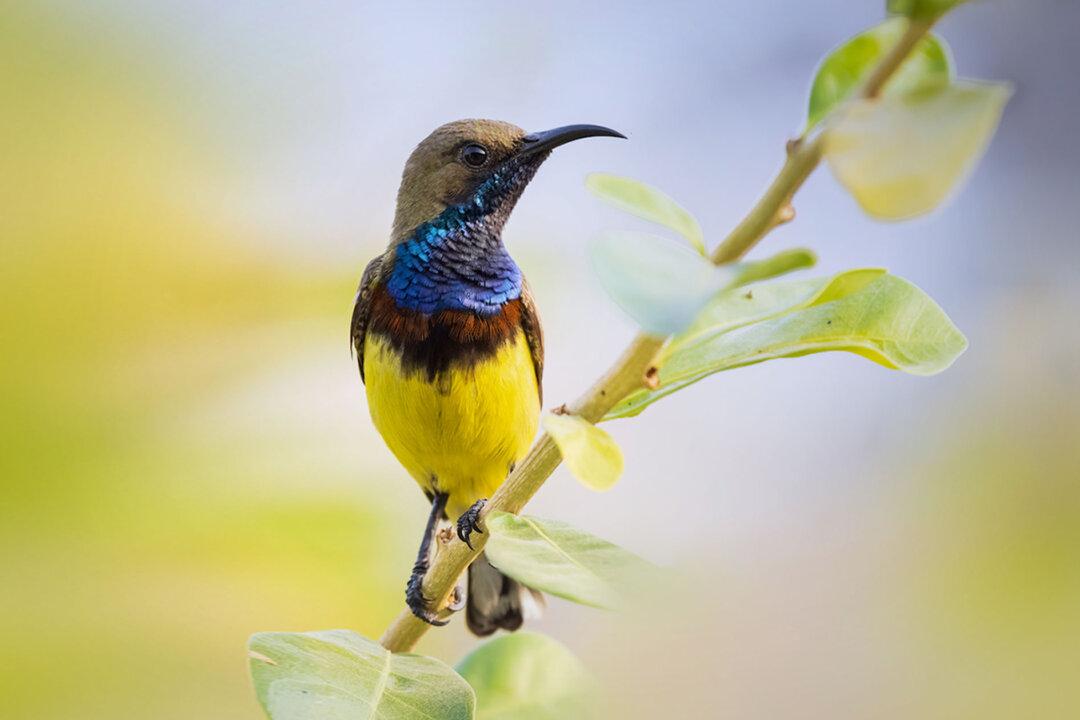The male olive-backed sunbird of Southeast Asia and Australia is a small beauty with a colorful feature tucked beneath its wings. His metallic blue and yellow plumage is augmented by a sudden burst of apricot when it comes time to find a mate.
Meanwhile, the female olive-backed sunbird is less colorful than her male counterpart, who pulls out all the stops during mating season. The small songbird also has a bright yellow belly, attractive iridescent blue feathers on his upper chest and throat, and olive-colored back and wing feathers, but the splash of apricot feathers beneath his wings is truly his secret weapon — only displayed when the male tries to attract the female.





